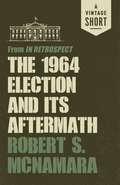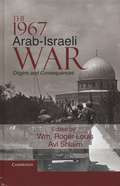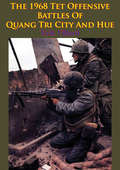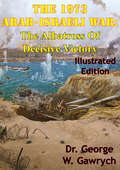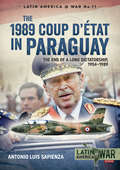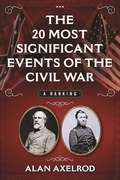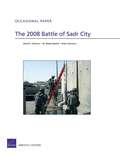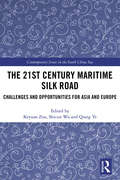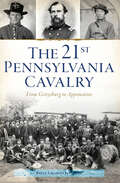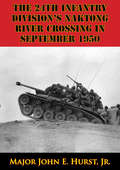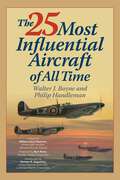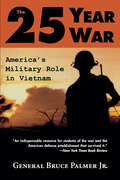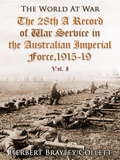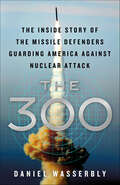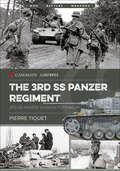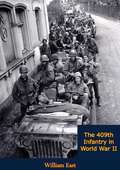- Table View
- List View
The 1937 – 1938 Nanjing Atrocities
by Suping LuThis book presents a comprehensive overview of the Nanjing Massacre, together with an in-depth analysis of various aspects of the event and related issues. Drawing on original source materials collected from various national archives, national libraries, church historical society archives, and university libraries in China, Japan, Germany, United Kingdom and the United States, it represents the first English-language academic attempt to analyze the Nanjing Massacre in such detail and scope.The book examines massacres and other killings, in addition to other war crimes, such as rape, looting, and burning. These atrocities are then explored further via a historical analysis of Chinese survivors’ testimony, Japanese soldiers’ diaries, Westerners’ eyewitness accounts, the news coverage from American and British correspondents, and American, British and German diplomatic dispatches. Further, the book explores issues such as the role and function of the International Committee for Nanking Safety Zone, burial records of massacre victims, post-war military tribunals, controversies over the Nanjing Massacre, and the 100-Man Killing Contest.This book is intended for all researchers, scholars, graduate and undergraduate students, and members of the general public who are interested in Second World War issues, Sino-Japanese conflicts, Sino-Japan relations, war crimes, atrocity and holocaust studies, military tribunals for war crimes, Japanese atrocities in China, and the Nanjing Massacre.
The 1940s: From World War II to Jackie Robinson (Decades of the 20th Century)
by Stephen FeinsteinThe Decades of the 20th Century series uses short articles and numerous photos to introduce young readers to the people and events that made news and changed history in the twentieth century. -- Highlighting important happenings in politics, science, sports, the arts and entertainment, and environmental issues, the series also focuses on interesting topics like the lifestyles, fashions, and fads that have made each decade of the century unique and memorable. -- Curriculum based and useful for reports.
The 1956 War: Collusion and Rivalry in the Middle East (Cummings Center Series #Vol. 11)
by David TalRecently declassified documents and new scholarship have prompted this reassessment of the collusion between Israel, France and England which drove the 1956 War. International aspects, Israeli involvement, the plot which sparked off hostilities, and the Egyptian losses and gains are analyzed.
The 1964 Election and Its Aftermath: from In Retrospect
by Robert Mcnamara"Can anyone remember a public official with the courage to confess error and explain where he and his country went wrong? This is what Robert McNamara does in this brave, honest, honorable, and altogether compelling book."—Arthur Schlesinger, Jr. Written twenty years after the end of the Vietnam War, former Secretary of Defense Robert McNamara's controversial memoir answers the lingering questions that surround this disastrous episode in American history, and chronicles the political events and fatal misassumptions that were behind the US involvement in Vietnam.A Vintage Shorts Vietnam Selection. An ebook short.
The 1967 Arab-Israeli War: Origins and Consequences
by Avi Shlaim W. Roger LouisThe June 1967 war was a watershed in the history of the modern Middle East. In six days, the Israelis defeated the Egyptian, Syrian and Jordanian armies, seizing large portions of their territories. Two veteran scholars of the Middle East bring together some of the most knowledgeable experts in their fields to reassess the origins and the legacies of the war. Each chapter takes a different perspective from the vantage point of a different participant, those that actually took part in the war and also the world powers that played important roles behind the scenes. Their conclusions make for sober reading. At the heart of the story was the incompetence of the Egyptian leadership and the rivalry between various Arab players who were deeply suspicious of each other's motives. Israel, on the other side, gained a resounding victory for which, despite previous assessments to the contrary, there was no master plan.
The 1968 Tet Offensive Battles Of Quang Tri City And Hue [Illustrated Edition]
by Erik Villard[Includes 10 maps, 5 illustrations]“This monograph focuses on the battles of Quang Tri City and Hue that took place during the 1968 Tet offensive. The offensive itself, an all-out effort by Viet Cong and North Vietnamese forces to overrun the major cities of South Vietnam, marked the turning point of the Vietnam War. Although the attacks were costly failures in military terms, they set the United States on a path of disengagement from the war that ultimately led to the fall of Saigon some seven years later.The battles for the two northernmost provincial capitals in South Vietnam, Quang Tri City and Hue, are particularly worth examining because the enemy regarded them as key objectives, second only to Saigon, the national capital. To a large extent, the success or failure of the offensive depended on what happened there. The battles tell us much about how the enemy prepared for the offensive, why he achieved a high degree of surprise and initial success, and why his attacks ultimately failed. The battle for Quang Tri City, a textbook example of a vertical envelopment, resulted in a quick allied victory. The fight for Hue turned into a slow, grinding campaign of attrition that lasted nearly a month before the enemy was finally defeated. Together, they offer instruction on the strengths and limitations of airmobile warfare and a primer on urban fighting in a counterinsurgency environment, subjects that continue to be a major Army interest throughout the world.”
The 1973 Arab-Israeli War: The Albatross Of Decisive Victory [Illustrated Edition]
by Dr George W. GawrychIncludes 8 maps and more than 20 illustrationsArmies appear to learn more from defeat than victory. In this regard, armed forces that win quickly, decisively, and with relative ease face a unique challenge in attempting to learn from victory. The Israel Defense Forces certainly fell into this category after their dramatic victory over the combined armies of Egypt, Jordan, and Syria in the Six Day War of June 1967.This study analyzes the problems that beset Israel in the aftermath of its decisive victory in the Six Day War over the Arabs. In the 1973 War, Anwar Sadat, Egypt's president, was able to exploit Israeli vulnerabilities to achieve political success through a limited war. An important lesson emerges from this conflict. A weaker adversary can match his strengths against the weaknesses of a superior foe in a conventional conflict to attain strategic success. Such a strategic triumph for the weaker adversary can occur despite serious difficulties in operational and tactical performance.The author suggests a striking parallel between the military triumphs of Israel in 1967 and the United States in 1991. In both cases, success led to high expectations. The public and the armed forces came to expect a quick and decisive victory with few casualties. In this environment, a politically astute opponent can exploit military vulnerabilities to his strategic advantage. Sadat offers a compelling example of how this can be done.
The 1989 Coup d'Étát in Paraguay: The End of a Long Dictatorship, 1954–1989 (Latin America at War #11)
by Antonio Luis SapienzaThe year 1989 was crucial for Paraguay. After a long period of 35 years of dictatorship, General Alfredo Stroessner was finally overthrown by a violent coup d’état. In a sort of prophetic way, he once said, "I came to power by arms and I will only leave by arms,” and that came true on 2 February of that year. The 1989 Coup d’état in Paraguay discusses Stroessner’s climb to power during a coup of 1954, fraudulent elections that got him reelected seven times, and the ways Stroessner kept himself afloat through cooperation with the armed forces, a right-wing political party, and the USA. Arguably, longing to maintain his popularity, the dictator launched a large number of major development projects, including construction of roads, water and sewage facilities, three big hydroelectric power stations, and a buildup of an airline. At the same time, abuse of human rights and oppression of any kind of political opposition became a norm: dozens of political prisoners were tortured and even executed, and thousands driven into exile. As could be expected from a dictator with a military background, Stroessner prompted a major expansion and a buildup of the armed forces and the police, too. Nevertheless, it was the armed forces of Paraguay that brought about his demise: the coup that finally ended Stroessner’s rule was planned by General Andres Rodriguez, the Commander of the I Army Corps – and then with full support of large segments of the Army, Air Force and the Navy of Paraguay. A detailed description of the coup in question, and how Stroessner was driven into exile in Brazil, is the centerpiece of this narrative. Thirty years since the fall of Stroessner’s regime, many things have changed in Paraguay: still, many remain the same. Containing over 100 photographs, color profiles, maps and extensive tables, The 1989 Coup d’etat in Paraguay is a unique study and a source of reference about an important episode in Latin American history.
The 20 Most Significant Events of the Civil War: A Ranking
by Alan AxelrodThis is the first book to not only select the events that most influenced the causes and outcome of America’s Civil War, but also to rank them in order of significance. In each of the book’s 20 detailed essays, author/historian/speaker Alan Axelrod presents an engaging narrative about the event, and also explains how the event shaped the course of the war, and ultimately the future of the country.The author’s selection and ranking criteria include:Effect as cause or trigger of the warDecisiveness: whether it was a war-winning or war-losing event (both in military terms and in terms of public opinion, morale, and support)Magnitude and scope: size and cost of a battleEnduring postwar significance in American history, politics, society, culture and/or in military history and technologyFrom Lincoln’s Inauguration, Antietam, and John Brown’s raid, to the New York draft riots and Stonewall Jackson dying as a result of friendly fire ? never before has the Civil War been explored quite this way. The Civil War was a violent argument between the North and the South. The purpose of this book is to start another argument about its history.
The 2008 Battle of Sadr City
by David E. Johnson Brian Shannon M. Wade MarkelUsing primary sources and interviews with those involved in the fighting and its aftermath, the authors describe the 2008 Battle of Sadr City, analyze its outcome, and derive implications for the conduct of land operations. Their analysis identifies factors critical to the coalition victory over Jaish al-Mahdi and describes a new model for dealing with insurgent control of urban areas.
The 2008 Battle of Sadr City: Reimagining Urban Combat
by David E. Johnson Brian Shannon M. Wade MarkelIn 2008, U. S. and Iraqi forces defeated an uprising in Sadr City, a district of Baghdad with 2. 4 million residents. Coalition forces success in this battle helped consolidate the Government of Iraq s authority, contributing significantly to the attainment of contemporary U. S. operational objectives in Iraq. U. S. forces conduct of the battle illustrates a new paradigm for urban combat and indicates capabilities the Army will need in the future.
The 2020 Commission Report on the North Korean Nuclear Attacks Against the United States: A Speculative Novel
by Jeffrey LewisThis &“brilliantly conceived&” novel imagines a devastating nuclear attack on America and the official government report of the calamity (Eric Schlosser, author of Fast Food Nation and Command and Control). &“The skies over the Korean Peninsula on March 21, 2020, were clear and blue.&” So begins this sobering report by the Commission on the Nuclear Attacks against the United States, established by Congress and President Donald J. Trump to investigate the horrific events of the following three days. An independent, bipartisan panel led by nuclear expert Jeffrey Lewis, the commission was charged with finding and reporting the relevant facts, investigating how the nuclear war began, and determining whether our government was adequately prepared. Did President Trump and his advisers understand North Korean views about nuclear weapons? Did the tragic milestones of that fateful month—North Korea's accidental shoot-down of Air Busan flight 411, the retaliatory strike by South Korea, and the tweet that triggered vastly more carnage—inevitably lead to war? Or did America&’s leaders have the opportunity to avert the greatest calamity in the history of our nation? Answering these questions will not bring back the lives lost in March, 2020. It will not rebuild New York, Washington, or the other cities reduced to rubble. But at the very least, it might prevent a tragedy of this magnitude from occurring again. It is this hope that inspired The 2020 Commission Report. &“I couldn&’t put the book down, reading most of it in the course of one increasingly intense evening. If fear of nuclear war is going to keep you up at night, at least it can be a page-turner.&”—New Scientist
The 21st Century Maritime Silk Road: Challenges and Opportunities for Asia and Europe (Contemporary Issues in the South China Sea)
by Shicun Wu Keyuan Zou Qiang YeThis book explores the opportunities and challenges that both Europe and Asia face under the framework of the 21st Century Maritime Silk Road Initiative. The 21st Century Maritime Silk Road Initiative (MSR Initiative), put forward by the Chinese government together with the Silk Road Economic Belt, reflects China’s ambition and vision to shape the global economic and political order. The first step and priority under the MSR Initiative, according to documents issued by China, is to build three ‘Blue Economic Passages’ linking China with the rest of the world at sea, two of which will connect China with Europe. This initiative, however, still faces enormous challenges of geopolitical suspicion and security risks. This book seeks to assess these risks and their causes for the cooperation between the Eurasian countries under the framework of MSR and puts forward suggestions to deal with these risks in the interdisciplinary perspectives of international relations and international law. Featuring a global team of contributors, this book will be of much interest to students of Asian politics, maritime security, international law and international relations.
The 21st Pennsylvania Cavalry: From Gettysburg to Appomattox (Civil War Series)
by Britt Charles IsenbergHailing from the south-central region of the state, the 21st Pennsylvania Cavalry was forged during the Gettysburg Campaign in the third summer of the Civil War. Its charismatic officers included William H. Boyd and Oliver B. Knowles, who had honed their fighting prowess earlier in the war against fearsome Confederate tacticians John Mosby and John Imboden. The regiment's war record was dynamic and arduous, including service under Meade and Grant at Cold Harbor as infantry and making the last charge at Appomattox Court House as cavalry. After the war, veterans continued to honor their comrades, and two monuments were erected at Gettysburg to commemorate the regiment's proud service. Author Britt Charles Isenberg chronicles the gritty history of the 21st Pennsylvania Cavalry.
The 23rd Psalm: A Holocaust Memoir
by George Lucius Salton Anna Salton EisenAfter a half century, the author who now lives in Florida returned to his hometown in Poland to find that "... the wall that I have carefully built between the past and present has crumbled..." Salton (nee: Saltzman) relates surviving ten concentration camps as an adolescent and liberation by American soldiers, including Jewish ones to his astonishment.
The 24th Infantry Division’s Naktong River Crossing In September 1950
by Major John E. Hurst Jr.It is the story of the 24th Division's Naktong River crossing with which this thesis is concerned. In writing an account of the 24th Division's crossing, the historian cannot detract from the praise due the officers and men of the division who sacrificed so much in crossing the Naktong River barrier; neither can he omit the roles played by the non-divisional troops who supported the crossing. Likewise, he should not disregard the adjacent units' actions that materially assisted the 24th Division in accomplishing its mission. For these reasons, I have chosen to relate the 5th Regimental Combat Team's attack on Waegwan and the 5th Cavalry Regiment's attack to secure the Taegu-Waegwan highway. Both of these operations were vital to the 24th Division's success; the first cleared the enemy from the east bank of the river and the second secured a main supply route for the division.
The 25 Most Influential Aircraft of All Time
by Walter Boyne Philip HandlemanThe 25 Most Influential Aircraft of All Time conveys the fascinating progression of flying technology from flimsy wood-and-fabric biplanes to thunderous supersonic wonders. Aviation&’s most historically relevant and arguably most influential aircraft – planes like the elliptical-winged Spitfire, the blisteringly-fast X-15, and the ubiquitous Learjet – are dramatically showcased in individual chapters. Factors like performance, price, operational efficiency, and perceptions in popular culture are examined. People are just as important as hardware in the discussion of the world&’s greatest aircraft. The larger-than-life characters who designed and built these aeronautical marvels – men like the reclusive Howard Hughes and the demanding Clarence &“Kelly&” Johnson – are an indispensable part of the story. So, too, are the fearless pilots like Charles Lindbergh and Chuck Yeager who gave life to the shining examples of a new and dynamic industry. The authors have flown or flown in many of the featured aircraft and they knew many of the luminous personalities involved, enabling them to share unique perspectives.The preface is written by William Lloyd Stearman, a former staff member of the National Security Council and the son of famed industry engineer Lloyd Stearman. The introduction is written by Norman R. Augustine, the retired Chairman and CEO of Lockheed Martin Corporation. The foreword is written by Burt Rutan, the renowned aircraft designer and founder of Scaled Composites. Each aircraft is magnificently illustrated in color, mostly with paintings by leading aviation artists.
The 25-Year War: America's Military Role in Vietnam
by Bruce Palmer Jr.An American army general presents an insider's history of the Vietnam War with &“a tough, dispassionate, common-sense analysis&” of what went wrong (Baltimore Sun). On April 30, 1975, Saigon and the government of South Vietnam fell to the communist regime of North Vietnam, ending twenty-five years of struggle for American military forces. This is the story of what went wrong there militarily, and why. General Bruce Palmer experienced the Vietnam War in the field and in the highest command echelons. America's most serious error, he believes, was committing its armed forces to a war in which neither political nor military goals were ever fully articulated by our civilian leaders. Our armed forces, lacking clear objectives, failed to develop an appropriate strategy, instead relinquishing the offensive to Hanoi. Yet an achievable strategy could have been devised, Palmer believes. Moreover, our South Vietnamese allies could have been bolstered by appropriate aid but were instead overwhelmed by the massive American military presence. Compounding these errors were the flawed civilian and military chains of command. The result was defeat for America and disaster for South Vietnam. &“Perhaps the best single account of the Vietnam War by a military man.&” —Baltimore Sun
The 28th: A Record Of War Service In The Australian Imperial Force, 1915-19, Vol. I, Egypt, Gallipoli, Lemnos Island, Sinai Peninsula (The World At War #1)
by Herbert Brayley CollettA comprehensive description of Australia's mounted horse troops involvement in the First World War. From the formation of the 28th brigade light horse, through to their battles overseas.
The 2nd Norfolk Regiment: From Le Paradis to Kohima (Voices from the Front)
by Peter HartThe Second World War is vanishing into the pages of history. The veterans were once all around us, but their numbers are fast diminishing. While still in their prime many recorded their memories with Peter Hart for the Imperial War Museum. As these old soldiers now fade away their voices from the front are still strong with a rare power to bring the horrors of war back to vivid life. The 2nd Norfolk Regiment were a proud old regular battalion honed in the pre-war traditions of spit and polish at their Britannia Barracks in Norwich. Sent to France they sold their lives to gain time for the retreat to Dunkirk when surrounded by an SS Division at Le Paradis in May 1940. Over 100 of the survivors would be brutally massacred. Back in England they reformed from ordinary drafts of men called up from all over the country. A new battalion was born. Sent to India they met the Japanese head on in the bloody fight for Kohima against the Imperial Japanese Army. As the fighting raged in the jungle the Norfolks were once again right at the very sharp end of modern war. This is their story.
The 2nd SS Panzer Division Das Reich (Casemate Illustrated)
by Yves BuffetautThe Das Reich Division was the most infamous units of the Waffen-SS. Hitler's Schutzstaffel (SS) units were originally paramilitary formations raised to protect the members of the Nazi party, and the Waffen-SS (the armed SS) was founded in 1934 as the SS-Verfügungstruppe. In 1939 the SS-Verfügungstruppe was placed under the operational command of the OKH. During the invasion of Poland the unit fought as a mobile infantry regiment. There were doubts about the unit's effectiveness, but Hitler ordered it be allowed to expand and form its own divisions, but under the command of the army. In 1940 the SS-Verfügungs-Division participated in the invasion of the Netherlands and France. After the Battle of France the SS-VT was officially renamed the Waffen-SS, and in 1941, the Verfügungs-Division was renamed Reich, later Das Reich.In 1941 Das Reich took part in the invasion of Yugoslavia, where its men accepted the surrender of Belgrade. In Barbarossa, Das Reich fought with Army Group Center, in the spearhead of Operation Typhoon and taking part in the battle of Moscow, by which time it had lost 60 percent of its combat strength. It was pulled off the front in mid-1942 and sent to refit as a panzer-grenadier division. Returning to the Eastern Front, Das Reich took part in the fighting around Kharkov and Kursk. Late in the year it was designated a panzer division. In 1944, the unit was stationed in southern France when the Allies landed in Normandy. The following days saw the division commit atrocities, hanging 100 local men in the town of Tulles in reprisal for German losses, and massacring 642 French civilians in Oradour-sur-Glane, allegedly in retaliation for partisan activity in the area. Later in the Normandy fighting Das Reich was encircled in the Roncey pocket by US 2nd Armored Division, losing most of their armored equipment. Das Reich surrendered in May 1945.
The 300: The Inside Story of the Missile Defenders Guarding America Against Nuclear Attack
by Daniel WasserblyMilitary and security expert Daniel Wasserbly introduces the elite unit tasked with protecting the nation from long-range weapons of mass destruction.Comprised of just three hundred soldiers, the United States Army’s 100th Missile Defense Brigade and 49th Missile Defense Battalion utilize sophisticated and cutting-edge technology to monitor the skies and seas surrounding the country and shield three hundred million Americans against any potential nuclear threat. Named for the number of Spartan warriors who defended Greece at the Battle of Thermopylae, these vigilant individuals endure rigorous, always-evolving regimens to maintain peak efficiency in the event of an actual nuclear strike.Assigned to extraordinary locations at Fort Greely, Alaska and Schriever Air Force Base, Colorado, the 300 are responsible for the highest levels of homeland security. They not only maintain a never-ending watch via radar and sensor arrays, but receive continuous training in operating advanced interceptors designed to home in on and destroy in-flight ballistic missiles. It’s a complex—and occasionally unreliable—defense system that scientists and engineers are always improving and upgrading.With unprecedented access to the highly classified strategic nerve centers of U.S. Northern Command in Cheyenne Mountain, years of research, and dozens of exclusive interviews with normally inaccessible missile crews, Wasserbly reveals the incredible true story behind the 300’s essential defense operations.
The 3rd SS Panzer Regiment: 3rd SS Panzer Division Totenkopf (Casemate Illustrated #Cis0011)
by Pierre Tiquet“A fascinating look into the experiences of the men of an elite armored unit that fought on the Eastern Front, written essentially in their own words.” —AMPSThe 3rd SS Panzer Regiment was part of the Totenkopf Division—one of the thirty-eight Waffen-SS divisions active during World War II. Notorious for its brutality, most notably a mass execution of British prisoners in the Battle of France, Totenkopf had a fearsome reputation. The 3rd SS Panzer Regiment was formed in France in late 1942, and transferred to the Eastern Front in early 1943, where it fought for the rest of the war.The regiment participated in a number of battles, and would be reduced and rebuilt a number of times. The panzers of 3rd SS Panzer Regiment fought at Kharkov, took part in Operation Citadel, fought in the battle of Krivoi Rog, and the relief of the Korsun Pocket. The regiment then retreated over the Dniester. They fought in Poland against the Russian advance, before being moved to Hungary where they participated in the attempt to relieve Budapest. They eventually surrendered in Czechoslovakia to the 11th US Armored Division.This book tells the story of the 3rd SS Panzer Regiment through the words of the veterans themselves. Among the veterans whose accounts are included are Walter Weber, a member of a tank crew in 5. Kompanie who recounts their optimism and high spirits at the start of Operation Citadel as the Germans made initial advances, followed by retreat as winter set in and the Russians began to push them back. Unterscharführer Stettner recalls the fierce tank battles and the difficulties advancing across minefields and evading an often well-concealed foe. Corporal Fritz Edelmann records the attempts to relieve Budapest in 1945 that Totenkopf took part in, which ended in encirclement, defeat and surrender to the Americans on May 9, 1945. In addition, it is illustrated with a wealth of contemporary photographs, original documents, and artifacts.
The 409th Infantry in World War II
by William East William F. Gleason Julius J. UrbanThis history was originally published in 1947 by the Infantry Journal Press. The 409th Infantry Regiment was one of three regiments in the 103rd "Cactus" Infantry division, which arrived in Southern France in Oct. 1944. They fought through the Vosges sector and later into the Rhineland area of South Central Germany. They then moved into Austria where they ended the war in May 1945.
The 4th Marine Division In World War II
by 1st Lieut. John C. ChapinThe major ground component of the active Marine Corps Reserve is the 4th Marine Division, Fleet Marine Force. The combat record of this division in World War II was exemplary; in the short space of one year it participated in four major amphibious assaults and won two presidential citations. The interest in its battle record among the reservists who now serve in its ranks has prompted the republication of this brief history, originally published in August 1945 and reprinted in 1974. This new reprint contains a brief history of the reserve 4th Division, written by Colonel Joseph B. Ruth, USMCR, a former member of the 25th Marines. Also included are copies of the division's lineage and honors, a list of its commanders, and a list of its units and their locations.The author of the 1945 history, then First Lieutenant John C. Chapin, served in the 3d Battalion, 24th Marines of the 4th Division. Assigned to the Historical Division when he recovered from wounds received in combat in Saipan, he completed this history and a similar one of the 5th Marine Division before his release from active duty.--E.H. Simmons, Brigadier General, U. S. Marine Corps (Ret.), Director of Marine Corps History and Museums



